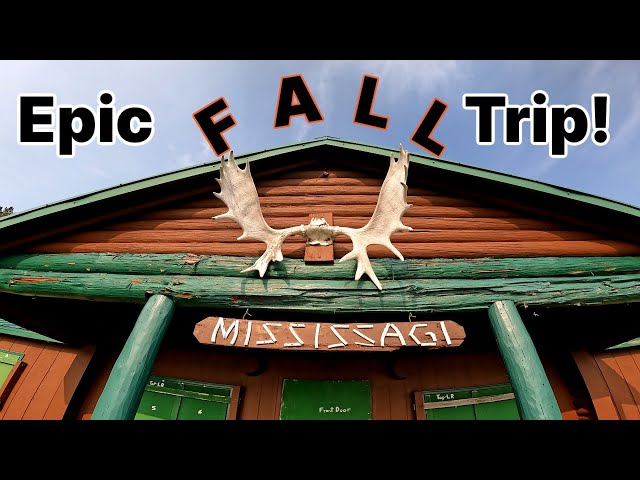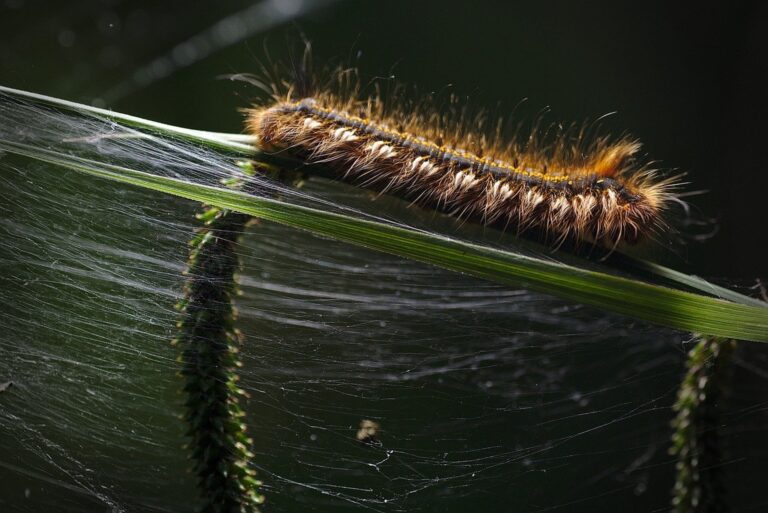Learn How To Perform a Cricothyroidotomy #bethedifference #nardoctor #crickit
What is the Hartford Consensus? #bethedifference #stopthebleed
What is the Hartford Consensus – Part 1 of 5 #bethedifference #stopthebleed
Bucket List Trip – Historic Canadian River in the Late Fall – Peak Colors!
Fenestrated vs Non-Fenestrated Needle Chest Decompression – What the study says #arsneedle
Does Bleach Keep Raccoons Away?
Some of the most persistent pests that you’ll have to deal with in the suburbs or out in the country are raccoons. Yeah, I get it: They are definitely cute and charming, but you won’t think they are quite so appealing when you have to pick up shredded bags of trash off your driveway at 3:00AM in the morning. Raccoons are smart, and they adapt quickly, and so scaring them off isn’t a sure thing.

You need something that’s actually going to drive them away. Some folks say that bleach is actually a good raccoon repellent. Is that true? Does bleach keep raccoons away?
Yes, bleach can keep raccoons away but it is generally a short-lived solution. The odor of bleach degrades quickly and some raccoons can become resistant to it.
To be perfectly clear, bleach is a strong chemical that can be hazardous to people and wildlife alike, so we’ve got to be smart here.
That being said, if you need a quick and sure solution to prowling raccoons, bleach can do the trick or at least buy you some time to implement a more permanent fix. Keep reading, and you’ll learn a lot more about using bleach to repel raccoons.
 Watch this video on YouTube
Watch this video on YouTubeBleach works to repel raccoons by exploiting these animals’ incredibly sensitive noses against them. Raccoons have a genuinely amazing sense of smell, but the trade-off is that they themselves are easily disturbed by harsh chemicals and fumes. Bleach happens to be just such a chemical, and a caustic one to boot.
When raccoons get a whiff of this stuff it is overwhelming to them, maybe even a little bit painful, and if they are already used to coming and going without any problems such a sudden change, and apparent threat, in their environment is likely to make them retreat.
It might only be for a short time, but they might decide to take their chances elsewhere in a place that doesn’t have such an awful nuisance around.
It’s reasonably safe to use bleach as a raccoon repellent, though this is definitely not a use you’ll find on the factory packaging. Bleach is highly caustic and highly reactive, and that presents some real dangers that you need to be aware of.
For starters, when you are using it yourself, it will ruin any clothing that it gets on, obviously, but more importantly, it can hurt your eyes and skin on contact. You must be cautious to avoid spills and inhaling those fumes yourself.
Another, bigger problem is that bleach will combine and react furiously with many other chemicals, and some of them can produce extremely dangerous toxic gases or liquids.
Ammonia is probably the most well-known and dangerous, producing a variant of mustard gas. And that ammonia can come from a source that you might not expect, like urine! Ask anyone who has ever used bleach unknowingly to try and clean up a pet accident and they will tell you.
This means you must be very careful when deploying bleach around your home especially in or around trash cans as raccoon repellent.
The good news is that the chemical compound that makes bleach what it is breaks down in time with exposure to air and becomes harmless salt water. Just know that it will remain a risk factor the entire time until then.
It can be, yes. Chances are you can count on raccoons running the other way when they encounter bleach, especially a close range, but if the animal were to get some on their eyes, directly on their nose, or in their mouth it is going to injure it, maybe even kill it.
As mentioned above, bleach will readily burn eyes, sensitive skin, mucous membranes, and the tissue of the lungs. Any raccoon that blunders into a container of bleach or, whatever reason, it’s trapped in an enclosed space with it is in for a bad time and might die horribly.
This can be more likely than you think if you try to rely on bleach as a long-term repellent, because raccoons are prone to overcoming their initial aversion and soldiering on in spite of it in quest of food or shelter.
Think this through before you use bleach as raccoon repellent!
You can use bleach in containers or repellent “stations” around your home or other areas that you want to protect from raccoons, or as a spray that you can use to form a kind of perimeter.
If you want to use bleach in stations to form a sort of network of protection or to repel raccoons from specific areas, simply fill up small containers with it, put a lid on them, and then poke large holes in the lid to let the aroma out. This will hopefully help protect it from spilling and contamination.
Your other alternative is to mix bleach with water, using equal parts of each, and then load it up in a sprayer or spray bottle to leave a perimeter around your home or property to hopefully repel the raccoons.
Obviously, take great care of that anything you are spraying the bleach on either it won’t be harmed by it, damaged by it, or that you just don’t care what harm comes to it before going this route.
Remember that bleach breaks down in time with exposure to air, and once you can no longer smell that bleachy smell it isn’t doing anything to repel raccoons.
Check your containers or reapply your spray as needed to maintain protection, and remember what I said about raccoons getting used to it in time.
You should expect your temporary bleach deterrent to start failing if raccoons remain in the area. When that happens, you need a good plan B. Ideally, if it’s legal or if you can pay for a trapper, you can trap and relocate the raccoon somewhere far away from your property.
Otherwise, you should look into more persistent and effective deterrents that can irritate and repel raccoons with greater effectiveness and also a higher degree of safety. Natural ones like spicy pepper powder or cinnamon can work, as can commercial deterrents.
Lastly, consider that raccoons are classified as pest animals in many areas, and you might be able to dispatch them using lethal traps or other means legally.
 Like what you read?
Like what you read?Then you’re gonna love my free PDF, 20 common survival items, 20 uncommon survival uses for each. That’s 400 total uses for these dirt-cheap little items!
We will not spam you.So, Can You Eat Caterpillars to Survive?
One of the most pressing survival considerations, no matter the setting or the situation, is food. Yeah, everyone knows that you can go for weeks without food before you starve, but you must consider that you’ll be mentally and physically debilitated from a lack of energy long before then!

Accordingly, smart preppers plan on sourcing wild-caught edibles to keep up their nutritional requirements. Insects are some of the very best survival foods around, and tend to be highly nutritious, but not all insects are good eating or safe. How about caterpillars, for instance? Can you eat caterpillars to survive?
Yes, most caterpillars are safe to eat in a survival situation. They tend to be packed with good protein and fats along with plenty of minerals and decent calories. However, some caterpillars are dangerous, either being highly venomous, toxic, or possessing defensive spines and stingers.
I know a fat, juicy caterpillar is the last thing on Earth you probably want to eat given a choice, but that’s kind of the point after all: you probably won’t have a choice given the circumstances. And under these circumstances, you can do a whole lot worse than caterpillars…
They’ll definitely keep you alive and they can even fill you up. Keep reading, and I’ll tell you everything else you need to know about eating these little creepy crawlies.
Yes, there sure is! Caterpillars as a survival food are nothing new, at all, and anyone who’s been through in-depth, hardcore survival training in the military or any other organization where getting lost all alone out in the wilderness is a legitimate on-the-job hazard will tell you as much.
So, let that comfort you: you won’t be the first person who’s been forced to eat caterpillars in extremis.
But, something else you should know is it caterpillars happen to be something of a dietary staple in various countries and cultures around the world, from Africa to South America, Asia to Australia, and elsewhere.
In fact, it’s no exaggeration to say that about 75% of cultures and nations on the planet eat caterpillars as an ingredient, snack, or mainstay food.
And there’s a good reason for this: Caterpillars are highly nutritious and very easy to prepare in a variety of ways. They are also easy to catch once you know a few tricks which we will learn later.
Because most countries around the world do eat caterpillars in one form or another, you can depend on finding them nearly anywhere.
Note that you won’t find them in the coldest regions on Earth, but pretty much everywhere else they are present, at least seasonally. In the US, you’ll find them in every single state in various environments (if you know where to look).
You’ll find them in grasslands, forests, savannahs marshes, mountains, and everywhere else. Everywhere you’ll find moths or butterflies, you can find caterpillars. The trick is learning what types of plants make for typical caterpillar food, because that’s where they hang out.
As a rule of thumb, most caterpillar species prefer to eat new, tender plants and other vegetative growth instead of mature, tougher ones.
What plants they eat exactly depends on the species, so it is worth learning which ones are in your area or in the area where you will be working or traveling so you know what to look for.
Often their distinctive bite marks are easier to spot than they are! Find the food, and you’ll find the caterpillars.
Something else to keep in mind is that where you find one caterpillar you’ll likely find more.
Some are actually communal, or semi-gregarious, and intend to stay together in a sort of herd. Others will just naturally flock to choice food as a matter of course, meaning you can probably make a great meal of caterpillars alone.
Now, there is an obvious downside to caterpillars as with many other insects. Some, though not most, are venomous and possess stingers or spines capable of delivering that venom. Others are toxic or else covered in defensive spines, barbs, bristly hairs, and other defensive adaptations.
A few caterpillar species, like the Southern Flannel Moth caterpillar and Saddleback caterpillar, are actually capable of delivering stings or packing toxic poison that can absolutely debilitate you, make you gravely sick, or even kill you outright.
The rule of thumb is that you want to avoid any of them that are covered with a plush coat of hair, obvious prickly spines or guard hairs, or bright, vivid colors and patterns which are a universal warning sign to all predators that are either dangerous or terrible to eat.
A thorough, in-depth review of safe caterpillar species is beyond the confines of this article, but there is a trusty rule of thumb that will rarely steer you wrong.
If your working knowledge of a caterpillar taxonomy is a little lacking, you should always look for ones that have smooth skin without any hair, spine, or barbs and are colored light green, dark green, tan, or brown. As long as they meet these criteria they probably won’t hurt you.
To be clear, there are some dangerous types that will still fall under this description also, and likewise, there are some safe varieties that are brightly colored or have loud patterns. But those are exceptions!
Obviously, if you want to make caterpillars a part of your survival food plan, it pays to brush up your knowledge on different species.
And as always, you are very wise to employ the field edibility safety test prior to tucking in. A little patience and some cautious inspection might save your life.
Now, let’s assume that you’ve caught caterpillars and they are absolutely, 100% safe to eat. Should you just chow down on them raw? You can, if you have no other choice, but it’s in your best interest to cook them in any way that you can.
That’s because caterpillars are frequent hosts of germs and parasites that could still hurt you or make you terribly sick. Even if it’s a fresh and relatively healthy caterpillar, there’s no telling what it’s been crawling over, so at the very least you want to give them a rinse in clean water.
If you have any way to cook them, they can be gently boiled, pan-fried, roasted, or prepared in any number of other ways. You can even dry them out, grind them into power, and then add them to a soup or stew if you want to.
However you do it, just make sure they are cooked thoroughly. That will kill the germs and parasites alike and keep you safe. Plus, take it from me; they taste a hell of a lot better when cooked!
Getting your hands on enough caterpillars to make a proper meal might be easier than you think.
Of course, you can go around picking them off of leaves and branches wherever you spot them but this can be quite a task: many caterpillars employ highly effective camouflage!
If you are hunting for them in anything but ideal lighting conditions (hardly guaranteed in a survival situation) you’ll probably waste more time than you need to.
A better bet for catching them en masse it’s the place a drop cloth or net made out of mosquito mesh beneath a plant that you know they will frequent for food, and then vigorously shake or tap the branches or the whole plant in an up-and-down motion to flick the caterpillars down onto your catcher.
Although they are great climbers and can go almost anywhere, most caterpillars don’t have a great grip like beetles and will easily be knocked free. Once you suspect that you’ve cleaned out a bush, move on to the next one and soon you’ll be rolling in caterpillars ready for the frying pan.
 Like what you read?
Like what you read?Then you’re gonna love my free PDF, 20 common survival items, 20 uncommon survival uses for each. That’s 400 total uses for these dirt-cheap little items!
We will not spam you.










